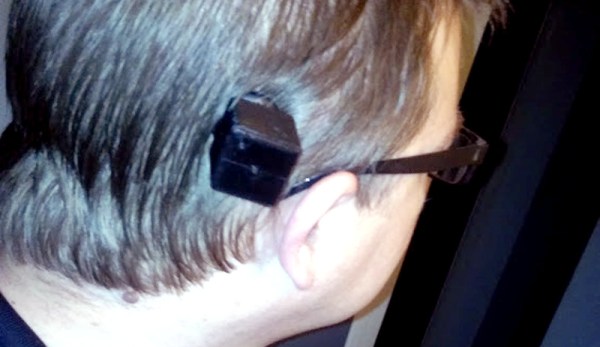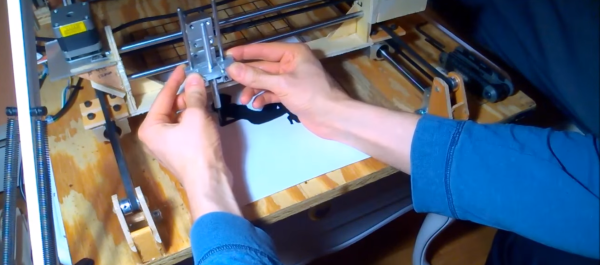When a hacker finds himself with a metal disc and magnet surgically implanted in his skull, chances are pretty good that something interesting will come from it. [Eric Cherry]’s implant, designed to anchor a bone-conduction hear aid, turned out to be a great place to mount a low-cost Bluetooth speaker for his phone – at least when he’s not storing paperclips behind his ear.
With single-sided deafness, [Eric]’s implant allows him to attach his bone-anchored hearing aid (BAHA), which actually uses the skull itself as a resonator to bypass the outer ear canal and the bones of the middle ear and send vibrations directly to the cochlea. As you can imagine, a BAHA device is a pretty pricey bit of gear, and being held on by just a magnet can be tense in some situations. [Eric] decided to hack a tiny Bluetooth speaker to attach to his implant and see if it would work with his phone. A quick teardown and replacement of the stock speaker with a bone-conduction transducer from Adafruit took care of the electronics, which were installed in a 3D printed enclosure compatible with the implant. After pairing with his phone he found that sound quality was more than good enough to enjoy music without risking his implant. And all for only $22 out-of-pocket. While only a Bluetooth speaker in its current form, we can see how the microphone in the speakerphone might be used to build a complete hearing aid on the cheap.
We think this is a great hack that really opens up some possibilities for the hearing impaired. Of course it’s not suitable for all types of hearing loss; for more traditional hearing aid users, this Bluetooth-enabled adapter might be a better choice for listening to music.













